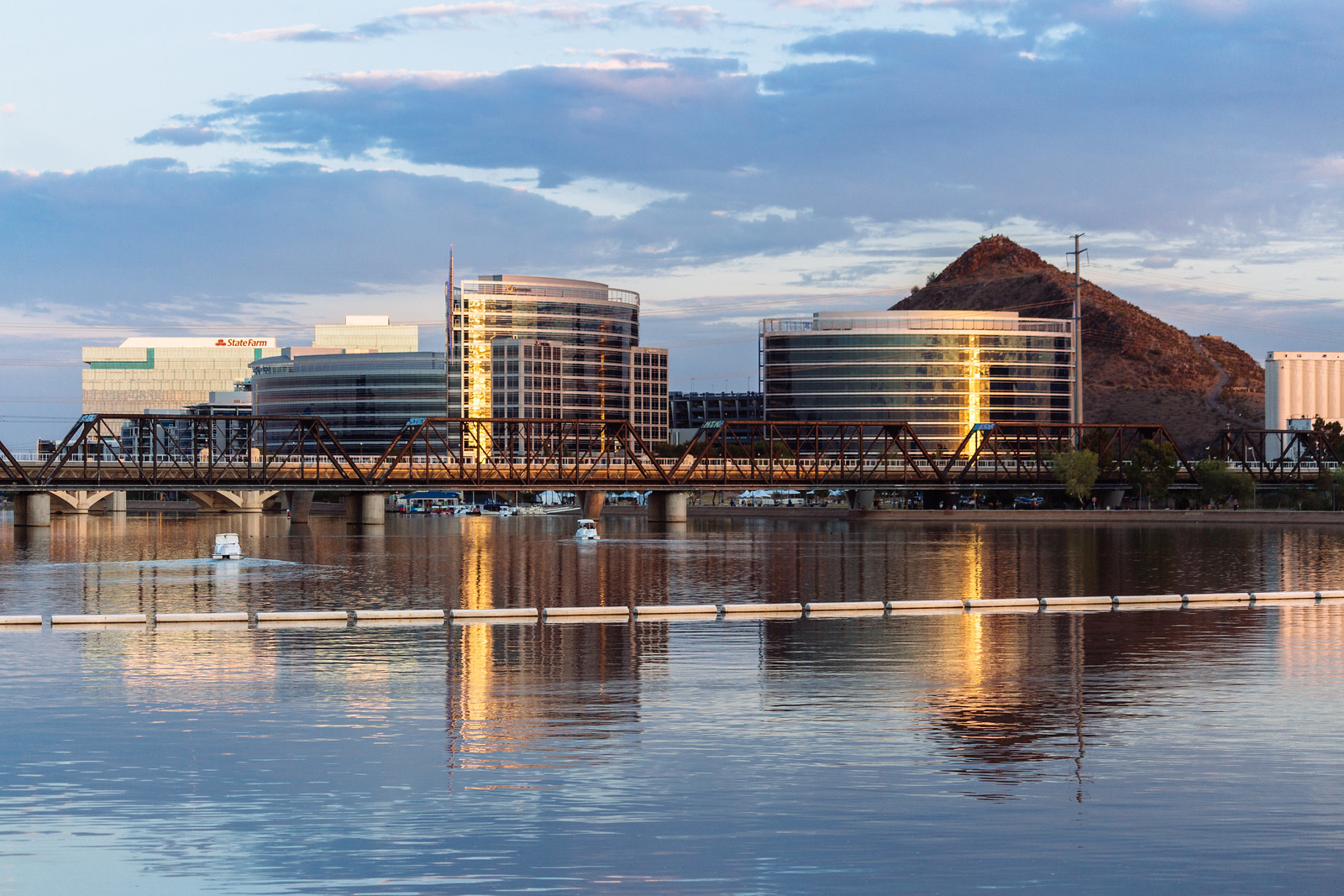UPDATE: Tempe City Council unanimously voted to send General Plan 2050 to voters. This article reflects our critiques of revisions made to the plan and our advocacy for maximizing housing and sustainability in it. While the plan fell short of its full potential to unlock more housing in Tempe, the most extreme demands to roll back housing in the plan were prevented from being enacted.
We want to be very clear: We urge you to vote YES on Prop 478 for a more affordable and sustainable Tempe. Read why here.
Every ten years, Arizona cities are legally required to update their general plans. This year Tempe has been developing the Tempe Tomorrow: General Plan 2050, which will go before voters March of next year.
General plans are documents that serve as an overarching vision for the city over the next thirty years. They touch everything from land use and transit to cultural amenities. The plans are developed by cities with community input and then sent to voters for approval.
Importantly, the plans are not set in stone, even when passed. They serve as a guide on how the city should grow rather than binding rules on how it must. When it comes to land use, developers frequently request amendments to the general plan to allow their projects to go through. Commissions and council have discretion over development.
While separate from zoning, Tempe’s Zoning and Development Code is one of the main tools used to implement the General Plan. To change zoning, a property owner will have to get a General Plan amendment first.
The drafting of Tempe’s 2050 General Plan provides an opportunity to take on some of the biggest challenges facing Tempe. Tempe needs more housing to address its housing shortage, as the city’s own document notes, Tempe provides more jobs than it has people. It needs to deal with climate change and it needs development that promotes walkability and transit usage to do so.
How Tempe’s 2050 General Plan Came Together
The plan has come about through endless public input. Since last October there have been around 40 different public meetings or feedback opportunities. A key part of this was the Committee Working Group: twenty five residents who advised city staff over ten months as they developed the plan.
If you have attended any of these meetings (as we have) you’ll notice something about the demographics. Per the US Census, only 10 percent of Tempe is over 65. Notably 54 percent of the population is non-Hispanic white, and around 60 percent of housing units are rental.
Attending these meetings with no other knowledge, you would come away with a very different understanding of what Tempe looked like. The meetings were dominated by an older crowd that was almost entirely homeowners. This is not to say that retired homeowners shouldn’t have a voice, but rather to say they shouldn’t be the only voice.
Unfortunately, this vocal minority has advocated for building less housing at a time when Tempe is desperately short of homes. They have advocated for less infill development, and making the city less walkable and transit friendly. At times these speakers have been very disparaging of students and renters.

Despite bringing out an unprecedented number of young folks and renters to city meetings, we have seen the loudest and angriest be treated like the only voice in the room and as representative of the whole city. Almost every revision to the plan has been to roll back proposed density increases that the city badly needs to achieve sustainable housing supply.
Despite the changes almost entirely in their favor, those showing up to the meetings seem just as angry as they were several iterations earlier.
The plan also includes “Cultural Resource Areas” which would freeze density in place in select neighborhoods. Most concerning, these are applied to vast areas in north Tempe near arterials, transit, and existing jobs and services. We should be clear that the purpose of these zones is exclusion, keeping out undesired groups like renters and students. The most vocal advocates of CRAs are not exactly quiet about this point.
JOIN OUR NEWSLETTER
We’ll keep you up to date on the latest on Tempe housing & transit news, upcoming events, and more!
These changes made cut against the principles laid out in the general plan to increase sustainability, mobility, and affordability. They also clash with the stated strategies in the housing element portion of the plan, such as encouraging housing near transit, employment, and services; and encouraging a diversity of housing types.
Tempe’s own Sustainability Commission wrote a letter speaking out against the changes to the plan. They called out the removal of large swathes of mixed-use zones and warned the plan would hurt Tempe’s ability to take on climate change and affordable housing. As they say, to grow sustainably while improving quality of life, we will need to embrace higher density, mixed-use, and transit oriented developments.
We urge fellow residents, councilmembers, and city staff to consider how Tempe’s 2050 General Plan as revised leaves us short of our stated goals within the document itself and of the broader community as whole.
We need our voice heard. There will be two council meetings to discuss General Plan 2050. Once on Thursday, August 10th and again on Thursday, August 24th. Both meetings will take place at 6 PM in the Tempe City Council Chambers.
You can also comment on the draft plan here.

